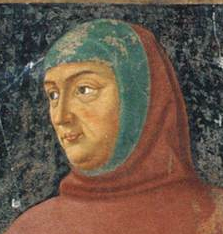 The answer to the ultimate question of life, the universe and, well, everything—at least at the subatomic level—may soon be at the fingertips of a UO professor.
The answer to the ultimate question of life, the universe and, well, everything—at least at the subatomic level—may soon be at the fingertips of a UO professor.
Professor David Strom has been elected to serve as deputy trigger coordinator for the ATLAS experiment at the Large Hadron Collider (LHC), the world’s largest particle accelerator. Located near Geneva, Switzerland, in a17-mile-long loop more than 500 feet below the earth’s surface, the collider is home to several experiments that will attempt to unravel some of nature’s biggest mysteries.
 Right: A simulated black hole in the ATLAS detector of the Large Hadron Collider. Image courtesy of CERN.
Right: A simulated black hole in the ATLAS detector of the Large Hadron Collider. Image courtesy of CERN.
The trigger is a vital component of the ATLAS experiment, an international collaboration involving 2,000 scientists, including a team of UO physicists. Their work seeks to shed light on such scientific enigmas as the origin of mass, extra dimensions of space, black holes and dark matter by smashing together beams of high-energy protons and analyzing the debris. The trigger selects events with potentially interesting interactions from the very large collision event rate (as many as 600 million per second at full power) to arrive at a manageable fraction of the massive amount of data to be recorded.
“If it is not done well, you can throw the proverbial baby out with the bathwater,” said UO physicist James Brau, Knight Professor of Natural Science.
Strom will serve as deputy trigger coordinator for one year before assuming the role of trigger coordinator in late 2011. He was elected by the ATLAS Collaboration Board, which includes representatives from more than 174 universities and laboratories from 38 countries, including the UO.
“David’s election by the collaboration is a testament to the esteem in which he is held by his colleagues from around the world,” said Stephen Kevan, head of the UO physics department.
The ATLAS detector is about 150 feet long and more than 80 feet high. It is about half as big as the Notre Dame Cathedral in Paris and weighs close to 7,000 tons, the same as the Eiffel Tower or a hundred 747 jets.
As scientists ramp up the power at the LHC, a textbook-changing discovery could occur at any time. Whether a breakthrough takes place in two years or by the end of the decade, the answers to the ultimate questions have never been so close at hand.
— Eric Tucker




 A new course will provide UO students with mobile smart phones and a mission: to build smart-phone apps.
A new course will provide UO students with mobile smart phones and a mission: to build smart-phone apps.
 Two CAS faculty members have been honored with the 2011 UO MLK Award.
Two CAS faculty members have been honored with the 2011 UO MLK Award. Petrarch is not only going digital at the UO, but musical as well.
Petrarch is not only going digital at the UO, but musical as well.